Bank of England policymakers have been slammed by UK newspapers for ‘being asleep at the wheel’. Spiralling inflation, a ‘cost-of-living crisis’, a borrowing binge, and an overheating labour market are being pinned on lax UK monetary policy. Adding fuel to the fire, last week’s UK data showed another big jump in inflation, a larger-than-expected drop in the unemployment rate, and record-high job vacancies.
But are the media’s criticisms justified?
Not really, for a number of reasons. For one, similar criticisms are also directed at the US Federal Reserve, the Bank of Canada, the Reserve Bank of Australia, the European Central Bank and other central banks. That indicates that many of these concerns are globally rooted, and don’t have their origins in lax domestic monetary policies.
Or perhaps all central banks have been asleep at the wheel? After all, globally monetary policy settings may have been too loose for too long, particularly during the pandemic. Perhaps those policies generated too much money, enabled excessive private sector leverage, and led to soaring demand, culminating in outsized price pressures and spiralling wages.
But that narrative (and its policy prescription) doesn’t fit the data. There’s no evidence that rampant money supply growth, surging private sector borrowing, or strong economic activity have led to economic overheating. Instead, price pressures have largely emerged due to acute supply side shortages that can mostly be traced to the pandemic or, more recently, to the conflict in Ukraine and China’s zero COVID policy. And while a recovery in global demand has amplified price pressures, fiscal policy – not monetary policy – has been mostly responsible.
Some might counter that even if monetary policy is not behind the surge in inflation, it should nevertheless take the lead in fighting it. This scribe is dubious. If easy—even unorthodox—monetary policies failed to generate inflation at any point in the past dozen years, why should we expect tighter monetary policy to play a restraining role now?
Fighting the current combination of weakening growth and high inflation with higher interest rates will not restore the supply-side of the world economy, particularly as most governments are now tightening fiscal policies. Surely a more appropriate policy response (which admittedly the UK government is leaning toward) would be to use fiscal policy to alleviate supply-side shortages (e.g., in energy markets), to increase the economy’s production capacity, and to shore up the purchasing power of households and companies. If, instead, central banks raise the cost of borrowing, they will impede much-needed business investment. Aggressively tight monetary policies, goaded on by a restless media, could make a bad situation even worse.
In what follows, we look at a few charts and offer brief commentary to reinforce these messages.
The first chart in Figure 1 below shows the link between commodity and consumer price inflation in advanced economies. It conveys the message that consumer prices have been rising because input cost pressures have been rising.
Figure 1: Higher commodity costs have pushed up consumer price inflation
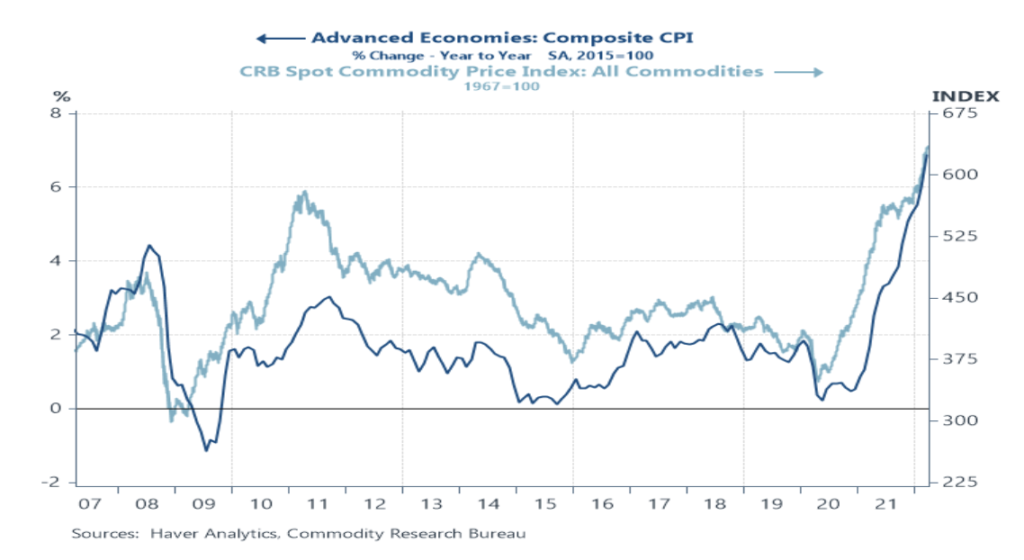
Figure 2 shows that the roots of these commodity price pressures reside in the unusual nature of economic activity that’s unfolded during and after the pandemic. It suggests a clear link between economic data surprises and commodity prices. Positive data surprises tend to spur rising commodity prices and vice versa. The message is clear: Inelastic commodity supply in the face of rising (falling) demand has translated into higher (lower) prices.
Figure 2: Commodity prices were driven higher by relative demand shifts
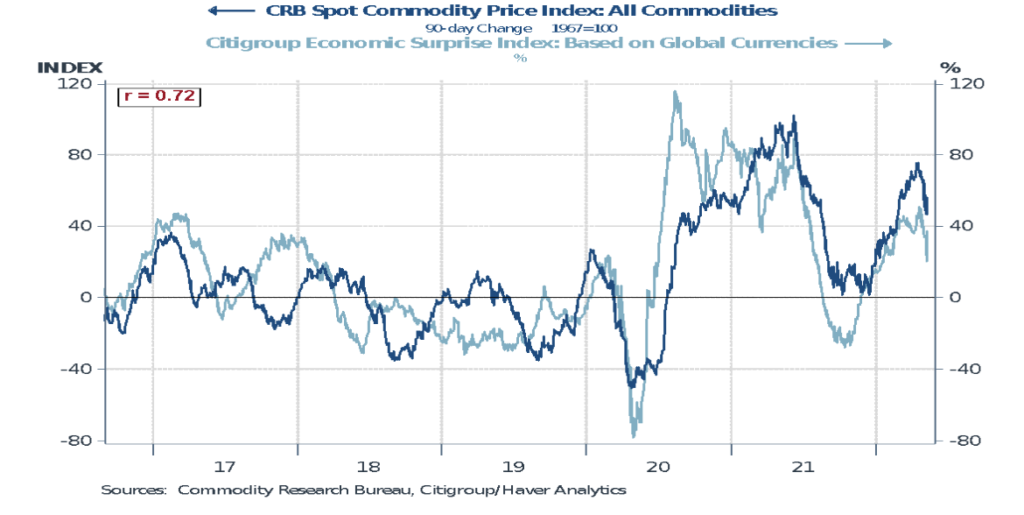
Doesn’t that mean that unexpectedly strong global demand has been responsible for rising commodity prices? Not so fast! Overall output levels at the start of 2022 were not that much higher than at the start of 2020. Supply ought to have been adequate to meet demand.
Instead, a change in the locus of demand has been decisive. Rolling waves of lockdowns across major economies shifted household spending from services to goods. That shift in relative demand produced an unexpectedly strong demand for raw materials, which could not be satisfied in the short run by higher commodity output. The result was soaring prices.
The role of fiscal policy should not be underestimated. Figures 3, 4 and 5 below illustrate macroeconomic financial balances—differences between income and spending—of the private, government and overseas sectors for the UK, Euro Area and US economies.
What they show is instructive. In the past two years, the public sector has massively borrowed and spent while, in the aggregate, the private sector has de-leveraged and pulled back. Overall demand did not change much (nor did imports). And almost all expenditure-switching was fiscal, not monetary.
Of course, low interest rates and quantitative easing policies helped to facilitate fiscal expansion. But monetary policy largely financed government spending—it did not provide the impetus for the private sector to go on a borrowing and spending binge. Accordingly, the remedy for whatever excess demand exists ought to reside in fiscal, not monetary, retrenchment.
Figure 3: Fiscal policy has been in the driving seat of the Euro area economy in recent years
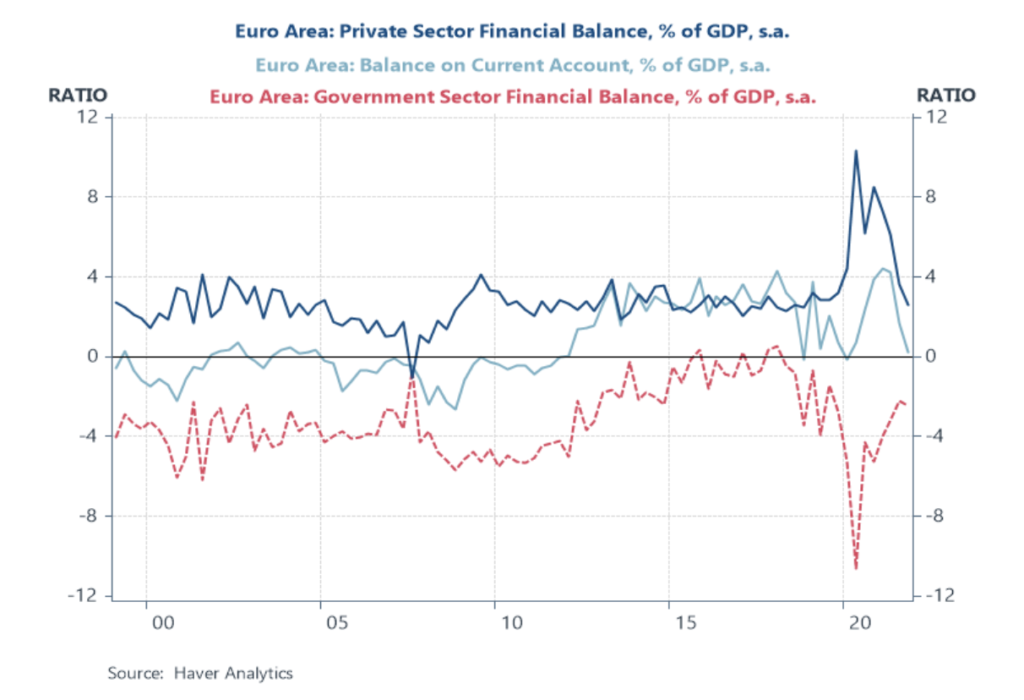
Figure 4: Fiscal policy has been in the driving seat of the UK economy in recent years
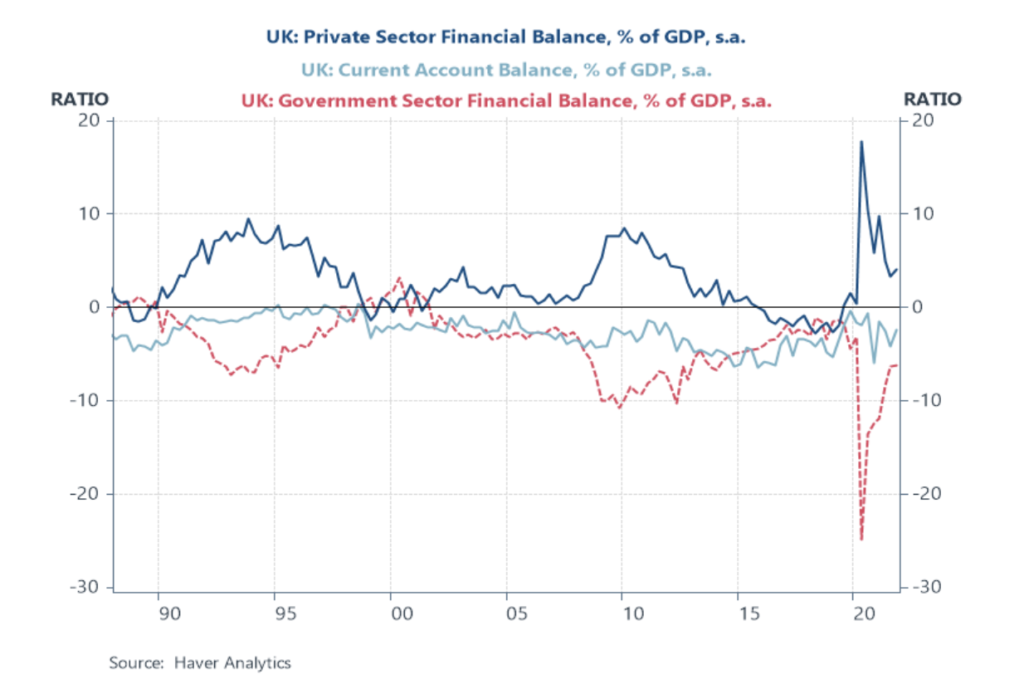
Figure 5: Fiscal policy has been in the driving seat of the US economy in recent years
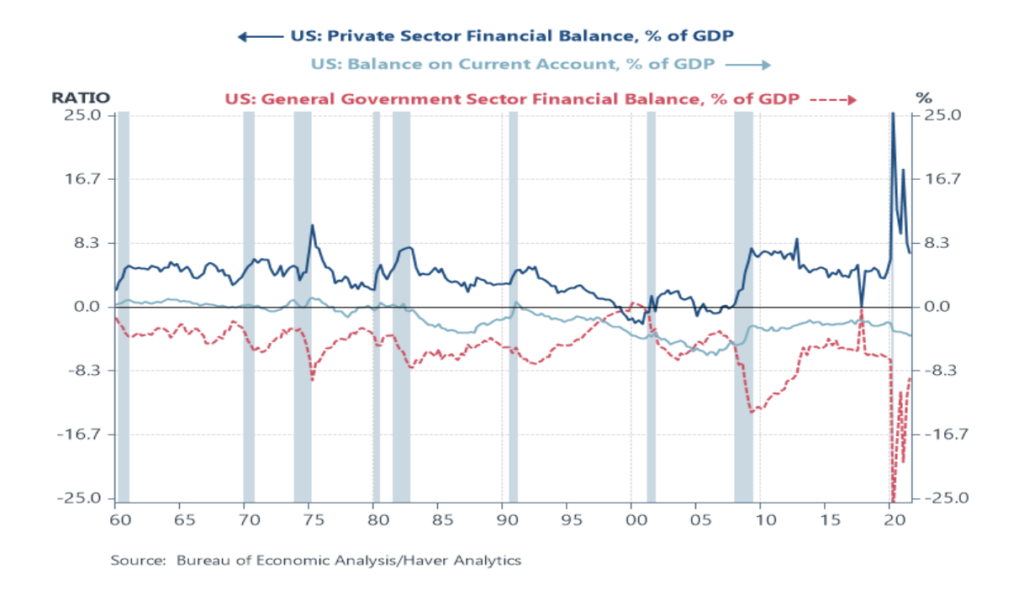
That flies in the face of the popular narrative, which is one of overheating caused by monetary largesse. But where is the evidence? The answer lies in capacity utilisation rates—a gauge of the mismatch between demand and supply—which remain below normal levels in every major economy. That is symptomatic of a shortfall in demand, not an excess.
Figure 6: Capacity utilisation rates are below normal levels in every major economy
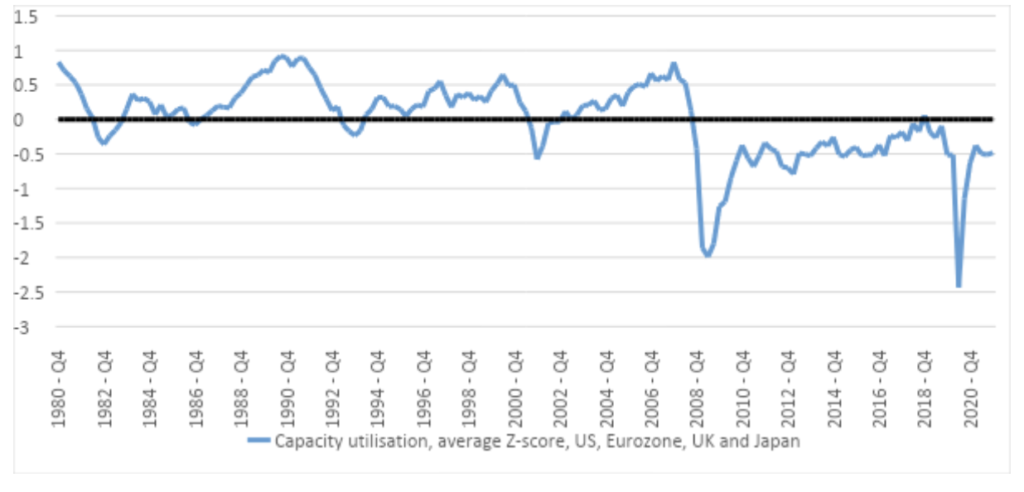
To be sure, unemployment rates have dropped to very low levels, suggesting some overheating in labour markets, which chimes with soaring job vacancies and rising wages. But other labour market indicators suggest that unemployment rates, alone, do not tell the whole story. Measures of hours worked, or of total employment, remain mostly below pre-pandemic levels (Figure 7). Participation rates have fallen. Hangovers from the pandemic (and possibly Brexit-related bottlenecks in the UK) mean the supply sides of the labour markets are not functioning well, contributing to worker shortages which in turn are boosting wage demands. Rising wages, in other words, are as much a manifestation of supply-side rigidity as they are of genuine overheating.
Figure 7: Employment levels in most major economies have yet to surpass pre-pandemic levels
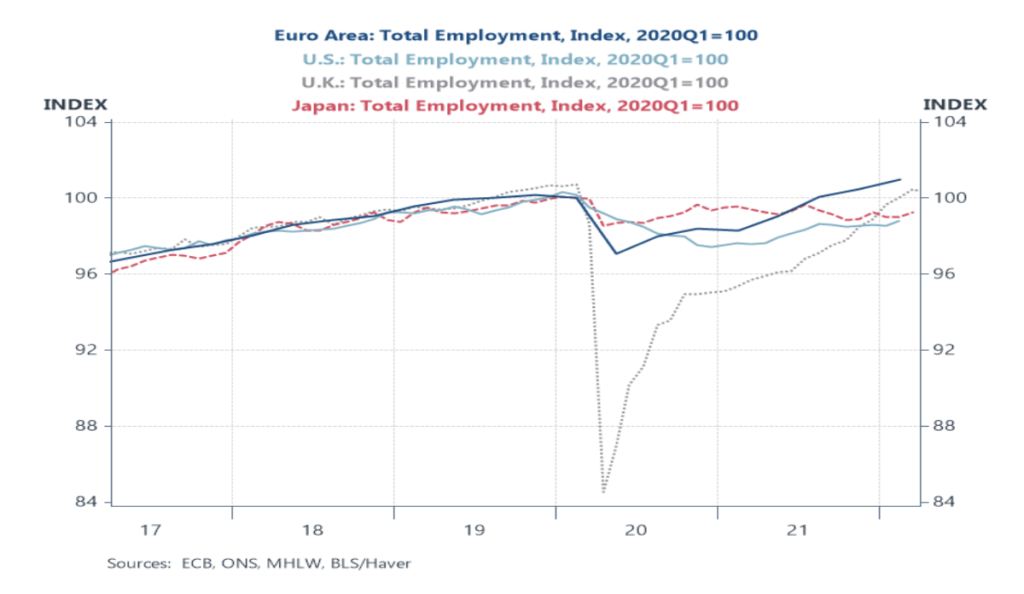
That’s a message consistent with surveys of company managers. The Federal Reserve Bank of Atlanta’s Business Expectations Survey asks American firms to state the influence of sales on prices over the ensuing 12 months. The latest survey shows that expected price pressures due to sales volumes have declined from their peak a few months ago, an outcome inconsistent with an overheating economy (Figure 8).
Figure 8: Evidence from the US that excess demand is driving up prices is thin

Central bank critics nevertheless argue that monetary policy must move forcefully to prevent inflation expectations from becoming entrenched in price- and wage-setting behaviours.
Surely that is theoretically correct. But as a practical matter, it is not what is happening today. Medium-term inflation expectations have not become unmoored. Market-based and survey-based measures in Canada, the UK and the US have moved up only a little from their pandemic-induced recession lows. But current levels do not look unusually high relative to the norms of the last twenty years (see Figures 10 and 11 below).
Figure 10: UK and Canadian long-term inflation expectations are anchored
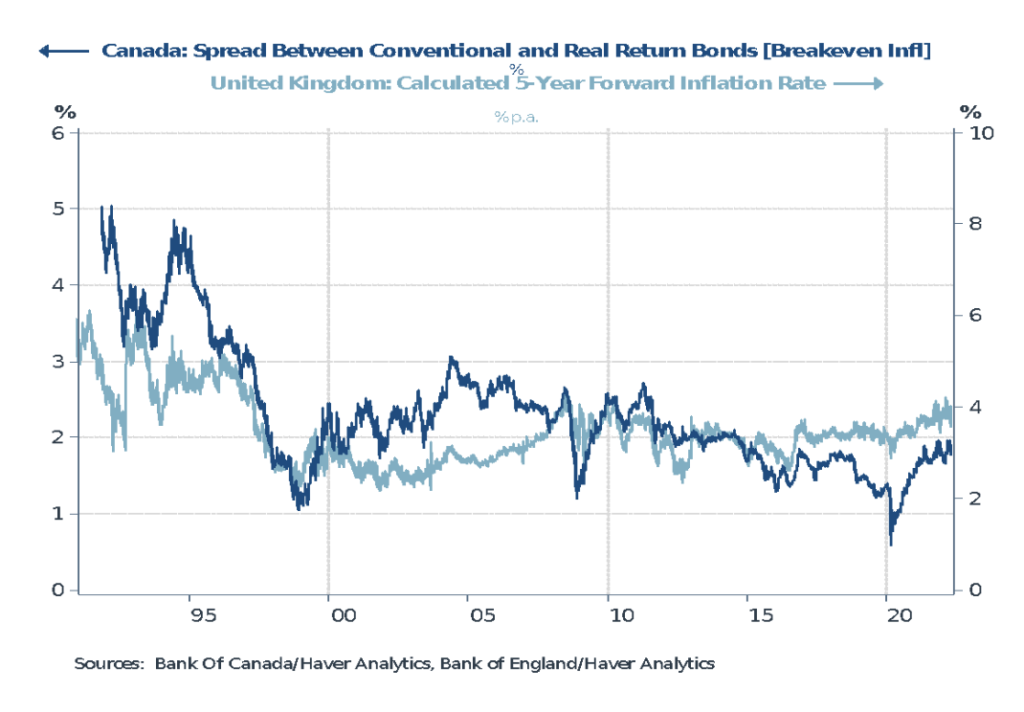
Figure 11: US long-term inflation expectations are anchored
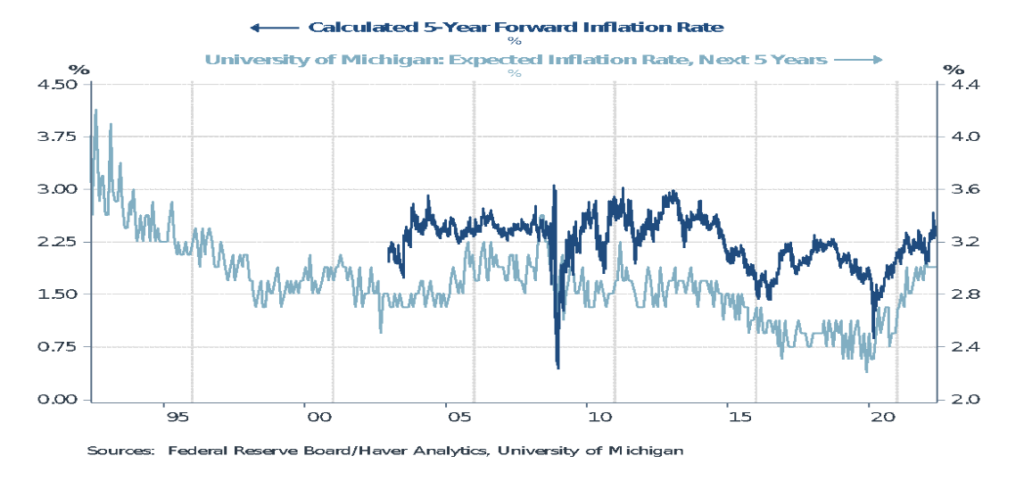
What about inflation? Well, wage inflation has been accelerating, but it is not keeping pace with price inflation (i.e., real wages are falling). Moreover, one should question the ability of central banks to slow wage inflation. Without getting into the grisly details, the textbook Phillips curve model has broken down (Figure 11). The simple idea that the levers of monetary policy can be pulled to first slow growth, which then drives up unemployment and which then pushes down wage inflation does not stand up to empirical scrutiny (Figure 12).
Figure 12: Where is the UK Phillips Curve?
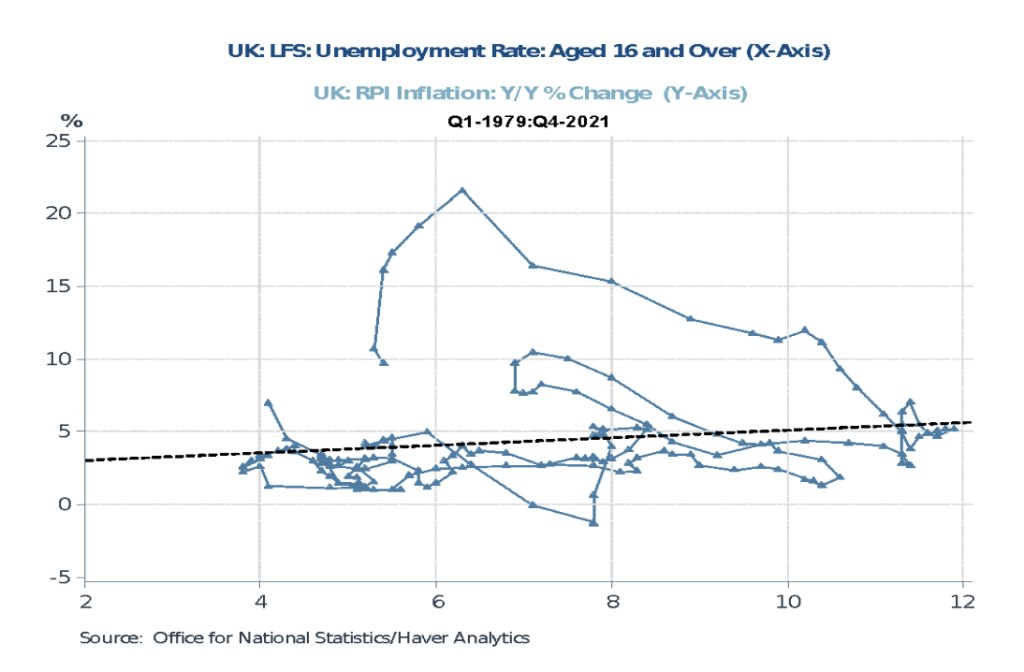
In sum, the media critics are wrong in both their diagnosis and remedy. The current state of the world economy owes less to lax monetary policies than many believe. High inflation and low unemployment are not manifestations of monetary-driven overheating. Rather, they reflect fundamental shifts in supply, as well as a legacy of massive fiscal stimulus.
That means that the world economy’s problems can’t be solved by tighter monetary policies. Combatting supply bottlenecks through innovative applications of government spending and taxation are far more prudent policy options. Just as important, the reasons why monetary policies have not functioned well in recent years need to be more fully understood. If not, misguided rate hikes will aimlessly destroy companies, jobs, livelihoods and living standards in a futile attempt to bring “inflation” under control.



